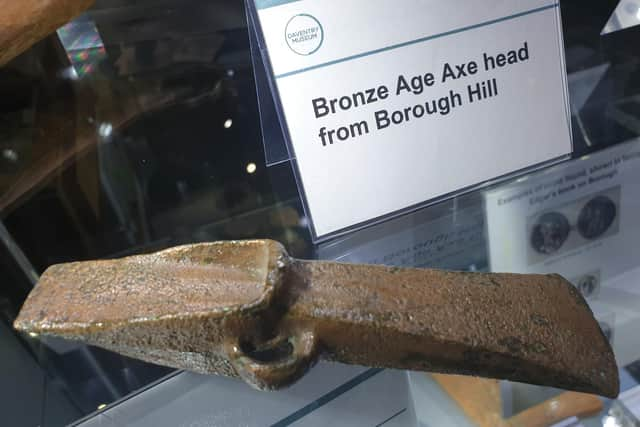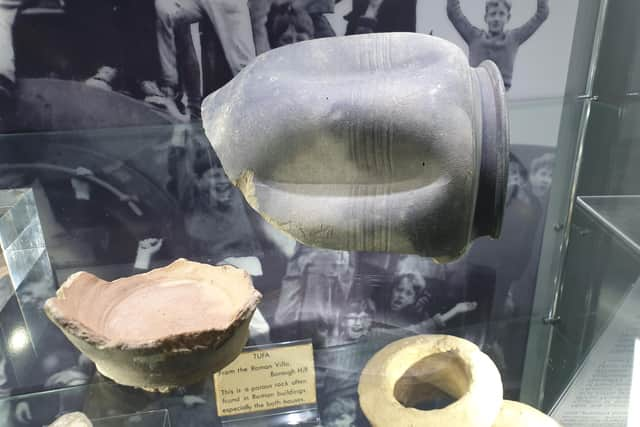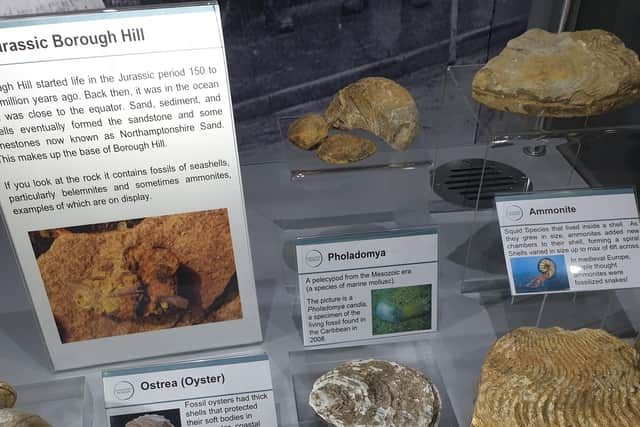New exhibition focuses on historic ages of Borough Hill
and live on Freeview channel 276
Borough Hill and its History pieces together the historic ages of this ancient monument site.
Inspired by the centenary of the publication of William Edgar’s book of the same name, this exciting exhibition brings the historic ages of Borough Hill alive and reflects on the findings and excavations in Edgar’s book through fascinating displays.
Borough Hill is steeped in history.
Advertisement
Hide AdAdvertisement
Hide Ad

It started life in the Jurassic period 150 to 200 million years ago.
During this time, it was in the ocean and was close to the equator.
Sand, sediment, and shells eventually formed the sandstone and some limestones now known as Northamptonshire Sand. This makes up the base of Borough Hill.
People have been using the hill for at least 5,500 years and have left plenty of evidence of their presence behind.
Advertisement
Hide AdAdvertisement
Hide Ad

This includes some of the objects that are on display in the exhibition. Human occupation of the hill started in the Mesolithic era with hunter gatherers, then later farming and agriculture in the Neolithic era.
The Bronze Age and Iron Age then followed, with evidence of an Iron Age Hill Fort on the hill.
The Roman occupation of the hill is evidenced by the remains of a Roman Villa including the mosaic fragment on display in the museum.
Fascinating exhibits include fossils, neolithic flints and stone tools, Bronze Age axes and pottery from the Roman Villa and Bannaventa, a Roman settlement located off the A5 on Watling Street.
Advertisement
Hide AdAdvertisement
Hide Ad

Edgar’s book, even though written nearly 100 years after the first excavations on Borough Hill and itself now 100 years old, is the only source that pieces together this history and artefacts from the hill, and is the inspiration for the exhibition.
The museum would like to thank to the Archaeological Resource Centre (ARC), Northampton Museum and Art Gallery, (NMAG) Community Landscape Archaeology Survey Project (CLASP), Museum of London Archaeology (MOLA), and Sywell Aviation Museum for their support and contributions to the exhibition.
Daventry Museum, in New Street, is operated by Daventry Town Council and is free to visit.
Opening hours are 9.30am to 1.30pm Tuesday to Friday and the first Saturday of the month from 10am to 4pm.